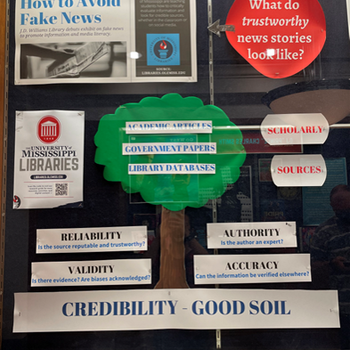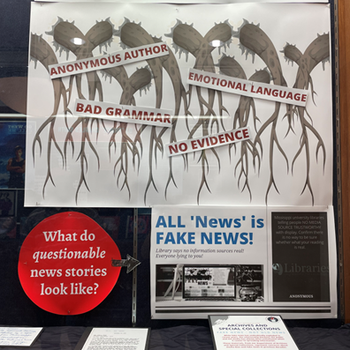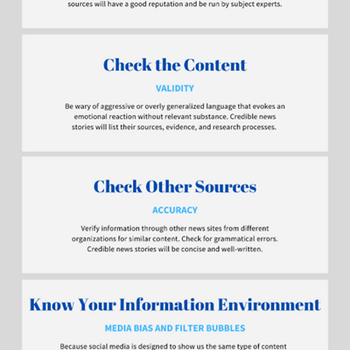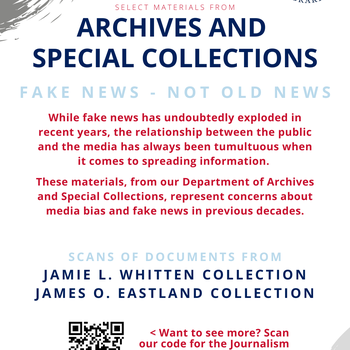Exhibits
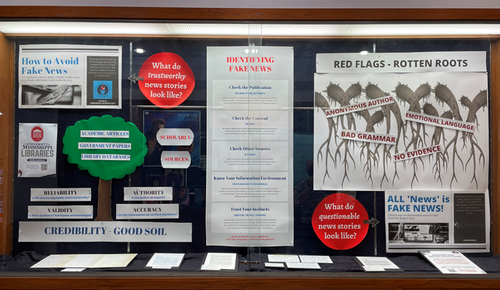
This exhibit is designed to teach patrons how to identify and avoid fake news.
- One side of the [display case] features an example of what generally trustworthy news looks like, and the components that make up quality information sources. Seeds of credibility – reliability, authority, validity, accuracy – grow into strong scholarly sources such as those found in library databases.
- The other side of the [display case] features an example of what questionable or fake news looks like, and common red flags that indicate unreliable information. Bad grammar, triggering language, unknown sources, and lacking evidence contribute to a rotten information foundation.
- Scans of selected archival documents line the bottom of the case, along with relevant discussion questions, to encourage patrons to think about how the concept of fake news has changed over time.
Acknowledgements: This exhibit and presentation were put together by Brooke Gross, Research & Instruction Librarian and Assistant Professor. Special thanks to Leigh McWhite, with the Department of Archives & Special Collections, and Stan Whitehorn with the IDEAlab.

